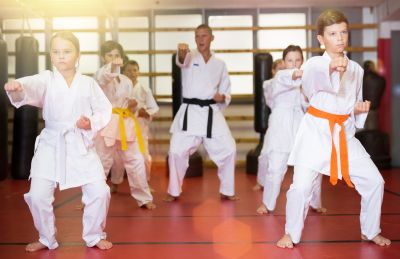Optimal Timing for Gradings
Gradings are an essential part of assessing and documenting progress in various disciplines. The optimal timing for gradings depends on factors such as skill development, seasonal considerations, and competition schedules. Properly timed gradings can enhance motivation and ensure accurate evaluation.
Many organizations schedule gradings during specific seasons to align with training cycles and competition calendars, often in spring or fall.
Gradings are best held after significant training periods or skill acquisition phases to accurately assess proficiency.
Timing gradings before major competitions allows participants to demonstrate their skills at peak readiness.
Regular assessments, such as quarterly or biannual gradings, help track progress and maintain motivation.

Spring is a popular time for gradings, coinciding with the end of winter training cycles.

Summer gradings often align with school breaks and outdoor training opportunities.

Fall provides a strategic window for gradings before year-end competitions and evaluations.

Ways to make Gradings work in tight or awkward layouts.

Popular materials for Gradings and why they hold up over time.

Simple add-ons that improve Gradings without blowing the budget.
Understanding the timing of gradings can significantly impact the effectiveness of assessments and participant development. Scheduling these evaluations thoughtfully ensures they serve as a meaningful milestone in progress tracking.

The grading process involves evaluating skills, techniques, and progress in a structured manner.

Clear criteria are used to ensure consistency and fairness in gradings.

Participants should prepare adequately, focusing on key skills and techniques.

A controlled environment ensures accurate assessment and fairness.

High-end options that actually feel worth it for Gradings.

Finishes and colors that play nicely with Gradings.

Little measurements that prevent headaches on Gradings day.

A 60-second routine that keeps Gradings looking new.
| Aspect | Details |
|---|---|
| Ideal Timing | Post-training or skill acquisition phases |
| Seasonal Factors | Spring, summer, and fall alignments |
| Preparation Time | Allow sufficient time for practice before grading |
| Participant Readiness | Ensure participants are prepared and motivated |
| Event Scheduling | Coordinate with competitions or events |
Selecting the right time for gradings enhances the accuracy of skill assessment and supports ongoing development. Proper scheduling aligns with training cycles and competitive schedules, providing meaningful milestones for participants.

Instructors observe and assess participants during gradings to ensure standards are met.

Constructive feedback is provided to guide future progress.

Gradings serve as a record of development over time.

A frequent mistake in Gradings and how to dodge it.

Small tweaks to make Gradings safer and easier to use.

Lower-waste or water-saving choices for Gradings.
For those interested in scheduling a grading or seeking more information, filling out the contact form can provide tailored guidance and support. Proper timing ensures gradings are effective benchmarks in skill development.

